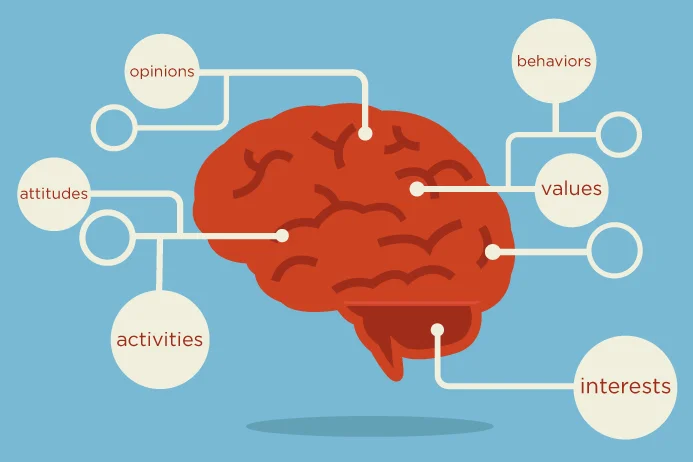
Understanding your target audience and giving them a tailored experience have become increasingly important over the past few years. It is more difficult for businesses to stand out and stay at the top of their customers’ minds due to the daily floods of information that consumers encounter both online and offline. You can use psychographics to improve your marketing tactics and foster enduring loyalty. You will learn more about psychographics in this post, including how to apply it to future business models and examples of where you might observe it in daily life.
Psychographics: What is it?
Have you ever considered what is going on in your consumers’ minds? Psychographics is a method for describing and categorising human characteristics into specific psychological groups. Psychographics cover a person’s personality, goals, morals, interests, pastimes, attitudes, and more. When performing market research, the phrase “psychographics” is frequently used. When determining how to predict consumer purchasing patterns and which commercials will be most effective, these traits are crucial.
What Connection Can Psychographics Make to Marketing?
The demographics of a target market have always piqued the curiosity of marketers. However, with the increased focus on tailored advertising, it’s critical now more than ever for businesses to have a thorough understanding of their target market. Customers’ personalities, interests, and values are crucial for effective marketing techniques. The psychographics and demographics of the target audience must be thoroughly understood in order to offer a product or service to them. With this knowledge, businesses will be able to add meaning to the trade by not just knowing who purchased what, but also starting to comprehend why.
How to Practically Apply Psychographic Segmentation
By grouping their clients into segments according to traits like lifestyle, personality, and values, marketers may put psychographics to use. Coca-Cola, for instance, recognised very early on in the development of their marketing strategy that individuals within a demographic category have highly varied psychographic characteristics that should not be overlooked or consolidated into one large group. As a result, they modified their brand to meet the new, hectic lifestyle that the younger, mobile generations are developing by positioning their product as a convenient beverage for on-the-go consumption.
What to Do Next to Include Psychographics in Your Marketing Strategy?
Psychographics delves deeper into a customer’s motivations for purchasing rather than only describing who they are. It is effective to keep customers engaged in your brand both now and in the future by keeping their motivations in mind. The greatest benefit of psychographic segmentation is the enormous opportunity it offers for customising. Customers feel more valued and are more likely to remain loyal to your business in the future when they receive tailored adverts and messaging. Keeping your current clients satisfied is just as critical, if not more so, than acquiring new ones. Psychographic-based customisation makes it possible to retain current consumers enthusiastic about sticking around for years to come.
Would you like to find out more about how to make use of psychographics? We at Antavo have specialists in loyalty who can help. Our staff can assist in creating a plan if you send us an RFP or schedule a demo right away.
Don’t forget to download Antavo’s Global Customer Loyalty Report 2022, a comprehensive report that details present and projected market trends to assist you in navigating the world of next-generation loyalty programmes.
